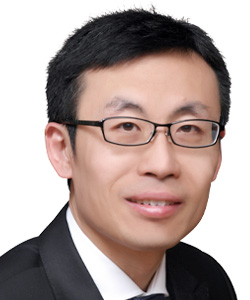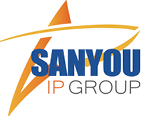The laws regarding patent eligibility for computer implemented invention (CII) in China have been evolving over time and become more open to complying with the development trend of science, technology and business. The most essential rules for patent eligibility of CII is that an eligible invention should solve a technical problem, adopt a technical measure, and achieve a technical effect. The three technical factors should be reflected by a claimed solution which controls, guides, or processes an object external to a computer or an internal object thereof.

Senior Partner, Patent Attorney
Sanyou Intellectual Property Agency
The law explicitly prohibits patentability of inventions solely covering rules and methods for mental activity and scientific discovery. As a result, certain types of claim subject title will receive immediate rejection from the China National Intellectual Property Administration (CNIPA), for example: a data structure comprising …, a signal comprising …, an algorithm comprising …, a stock dealing model comprising, and etc., no matter what solution is included in the claim.
In this regard, formally acceptable claim formats for CII generally include the following: (1) a method for carrying out the steps of a piece of software; (2) a readable medium storing software that realizes a method when being executed by a computer; (3) a device defined by functional modules (corresponding to software steps); (4) a device comprising a processor and software that is to be executed by the processor.
Substantial eligibility requirement
In addition to the formality requirement, substantial rules for patent eligibility of CII require the claimed solution to solve a technical problem, adopt a technical measure, and achieve a technical effect.
(1) Technical measure. A technical measure is a set of technical features that follow the laws of nature and serve to solve the technical problem and achieve the technical effect of the claimed invention. The technical features should interrelate and co-act with non-technical features (e.g., algorithm, business model). Pure mathematic calculation is not patent eligible. Merely tying a computer to a non-technical solution without interrelation and cooperation is not sufficient to make the computer a technical measure.
(2) Technical problem and effect. The claimed solution should at least solve a technical problem and achieve a technical effect, besides non-technical ones. Technical problem and effect has to do with some object with technical nature in the real world, e.g., creating physical objects, establishing physical connections, or improving physical characteristics. Accordingly, the result of the claimed solution is to obtain/change a technical object, obtain/change information by using a technical object, or change the way a technical object operates, etc.
Specifically, the three “technical” factors should be reflected by a claimed solution that controls, guides or processes an object external to a computer or an internal object thereof. Controlling, guiding, and processing of external objects include controlling an external operation process or external operation device, processing or exchanging external data, controlling conscious behaviour of a human being, etc.
In terms of external objects (tangible thing or intangible data/information), physical nature is of essential importance. The objects should have natural or technical characteristics, including physical, biological, chemical, astronomical ones and etc., but not just a symbol defined by human beings.
Interaction with a real world process will contribute essentially to the eligibility of a claimed solution. This is not only for the purpose of satisfying technical factors, but also reflects the concerns about patenting too broad a concept/an idea. Controlling, guiding, and processing of internal objects include improving internal performance of a computer, managing internal resources of a computer, and improving transmission of data in a computer, etc.
Some other requirements include:
(1) Novelty and inventive step. In terms of novelty and inventive step examination for CII, non-technical features such as algorithm and business rules should be considered together with technical features as a whole if these two are interrelated and co-acting in solving a technical problem.
In the problem solution approach for inventive step examination, the problem to be solved in comparison to the closest prior art should be determined on the basis of the whole claimed solution including non-technical feature and technical feature, if they are interrelated and co-acting. Otherwise, non-technical feature is not considered.
(2) Functional feature. According to the judicial interpretation of the supreme court, a functional feature in a claim covers embodiments disclosed in the specification and their equivalents. If implementing embodiments of a feature are immediately conceivable to a person skilled in the art by just reading the claim, the feature is not a functional feature. For unit-plus-function type of device claim for CII, according to the examination guideline, the functional feature should be construed as implemented by software modules instead of hardware components.
However, it happened in an infringement case that the units are deemed as functional components and are interpreted according to hardware embodiments disclosed in the specification (Nokia v. Huaqin). Another issue is such modules with respective functions may introduce uncertainty in determining infringement, because it is difficult to find individual component in an infringing product that corresponds to a respective module in the claim. Accordingly, for CII, it is advisable to draft device claims with processor-plus-software format instead of unit-plus-function format.
(3) Sufficient disclosure. Sufficient disclosure is another important requirement for CII, specific scenes and implementations to which the software is applied should be clearly defined in the specification (and the claims to some extent). For algorithm related patents, various parameters in the algorithm should be correlated to data in the technical field of application. For business model related patents, the specific scenes and processes should be described.
Summary
In view of the current practice regarding CII, we suggest drafting the claims to have a non-technical element combined with a technical element by describing a process of interaction/association involving both of them in a practical scene.
It is still an essential requirement for CII to have three technical factors (problem, measure, effect). However, it seems that the requirement on “technical” factors has become gradually less demanding, in a purpose of providing protection to innovations in emerging new industries.
Li Hui is a senior partner and a patent attorney at Sanyou Intellectual Property Agency

Sanyou Intellectual Property Agency
No.35 Jinrong Street, Beijing 100033, China
Tel: +86 10 8809 1921 / 8809 1922
Fax: +86 10 8809 1920
E-mail: lihui@sanyouip.com
www.sanyouip.com





















